What Brands Need to Know about the Post-Pandemic Grocery Shopper

By: Sam Danley
Shoppers are returning to brick-and-mortar grocery stores, but they’re not giving up e-commerce entirely. Consumers settling into new post-COVID habits are exercising their options, from in-store shopping to pickup and delivery, according to a report from 84.51°, a retail data science company and Kroger Co. subsidiary.
“We are seeing the hybrid shopper really get cemented into the retail landscape,” said Barbara Connors, vice president of commercial insights at 84.51°. “That’s something that is here to stay.”
The number of households using two shopping modalities increased 97% in the second quarter of 2020, and the number using three modalities increased 62%, according to the report. Those numbers are expected to remain elevated as consumers continue to value the online shopping experience while also seeking the benefits of browsing in-store.
To win in this omnichannel world, the grocery industry should focus on breaking down the silos it has built across different commerce modalities, Ms. Connors said.
“Brands and retailers need to stop thinking about the modalities as different experiences or different pillars,” she said. “Many in the industry still think about having a traditional merchandising and then a separate e-commerce strategy, and many have separate teams. You have to have those teams talk to each other, because it's the same customer that is shopping across modalities.”
Brands and retailers are more inclined to see the differences between modalities than shoppers, she added.
“We don’t think about them as being different,” Ms. Connors said. “We just think, ‘Today I’m doing pickup; tomorrow I’m going in the store.’ For brands and retailers, this means you have to connect insights across teams. You have to really think about what delivering a customer-centric seamless experience means.”
Price sensitivity and an increased focus on convenience also are shaping post-pandemic shopping behaviors, according to the report. In a June survey, 84.51° found 60% of consumers felt groceries were more expensive than the previous month. More than 70% said the same in July.
When shoppers have extra money for groceries, they’re spending it in line with trends, splurging in meat, seafood and produce. When budgets are tight, they’re trimming down on snacks.
“If push comes to shove and price sensitivity really prevails, the snacking category could see a threat,” Ms. Connors said. “It’s critical if you’re in this category to think about meeting consumer needs.”
She cited demand for healthier snacks that may be consumed on the go as an example.
“We’re seeing rice cakes gain momentum, which correlates to a greater focus on diet,” she said. “We’re also seeing meat snacks grow. There’s a functional benefit with protein, and there’s an element of sustaining people as they get back out… You have to serve a purpose for the customer because snacking is seen as discretionary.”
With more consumers returning to pre-COVID activities, schedules are getting busier, making convenience a higher priority. How this renewed focus on convenience will play out remains to be seen, but one area that may be impacted is breakfast. The past year and a half saw a surge in hot breakfast items as the pace of daily life slowed and more people ate meals at home.
“We’re already seeing this convenience stressor pop up as people bring more activities back into their days, nights and weekends,” Ms. Connors said. “Mornings could shift just as quickly.”
While convenience may play a larger role in the morning daypart as children return to school and parents return to the office, consumers that continue working remotely may still seek hot breakfast items for at-home consumption.
“We may see some of this stick around because morning routines still aren’t as crazy as they were in a pre-pandemic world,” Ms. Connors said. “That’s one of the most interesting things about this time period. We can hypothesize what might happen, we can anticipate what trends we want to watch, but we can’t predict exactly how consumers are going to respond until we’re in it.”
View Original Article Here.
Content Written On: 7/29/2021



